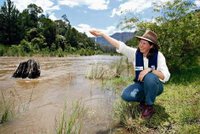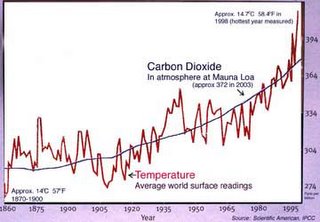The rewards are many. The ethanol is derived from Queensland grown sugarcane so this helps reduce Australia's reliance on foreign oil infrastructure. It gives the Megane more punch when needed and helps reduce greenhouse gas emissions as this report from 2003 shows.
But will I really achieve any good? Choice Magazine weighs up the pros and cons:Engine performance and total emissions are both improved by the addition of ethanol to gasoline. The clean burning nature of ethanol allows you to capture more of the work from the fossil portion of the gasoline, which compensates largely for the lower energy content of ethanol itself. In a 10 per cent blend (E10), all other things being held the same, you might get a zero to 2.7 per cent loss in mileage (kilometres per litre).
Another performance benefit from ethanol is its high octane addition to fuel. Of all the commercially viable octane enhancers possible, nothing delivers more punch than ethanol. The populace still feels the ill effects of the tons of poisonous lead that were spewed into urban environments because of the poor decision to accept lead over ethanol as the octane additive of choice.
Ethanol-blended petrol has advantages and disadvantages for the environment over normal petrol ? the extent of most of them depends on factors such as the percentage of the blend, the engine type and how the ethanol was produced:In the end analysis, if 15% of the fuel I am using is made from carbons that have been sucked out of the atmosphere rather than the ground that is an overall environmental gain for me. I'll just have to wait till 2007 to order my solar car.
- A 10% blend generally reduces the car?s emissions of carbon monoxide, hydrocarbons, some carcinogens such as benzene and toluene and ? in some circumstances ? the greenhouse gas carbon dioxide. However, due to the government subsidy, any reduction of carbon dioxide emissions comes at a very high price compared to other initiatives.
- Ethanol increases the petrol?s volatility, and therefore the amount of evaporative emissions of volatile organic compounds, which can contribute to global warming and the formation of ground-level ozone (summer smog). This can be avoided by changing the volatility of the petrol used for blending.
- There are higher emissions of carcinogenic aldehydes (such as formaldehyde and acetaldehyde) and ? in most cases ? of oxides of nitrogen.
- Overall, there seems to be little benefit for urban air quality or greenhouse gas emissions resulting from the use of ethanol-blended petrol. However, as ethanol is produced from agricultural products or waste, it?s a renewable energy source.
 Global Warning Climate Change Environment Science CO2 Carbon Sink Earth Australia Kyoto Energy 2006resolutions,Ethanol, Biodiesel, CO2, Greenhouse, Earth, Globe, Planet, Gaia, Peak+Oil
Global Warning Climate Change Environment Science CO2 Carbon Sink Earth Australia Kyoto Energy 2006resolutions,Ethanol, Biodiesel, CO2, Greenhouse, Earth, Globe, Planet, Gaia, Peak+Oil










